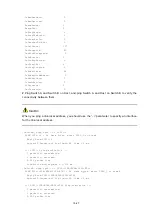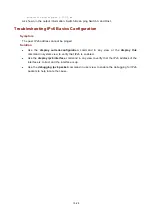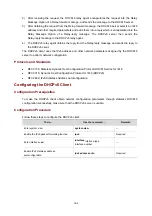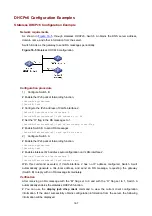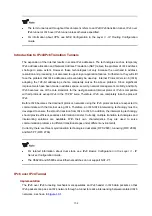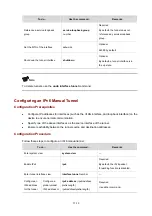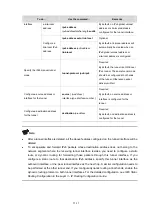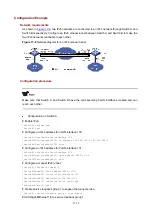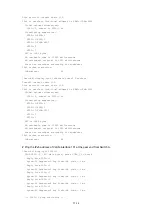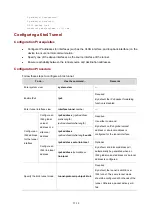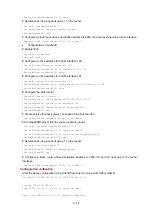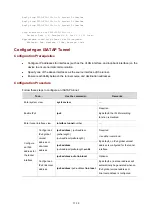
17-4
Type
According to the way an IPv6 packet is encapsulated, IPv6 over IPv4 tunnels are divided into the
following types:
Tunnel type
Tunnel mode
Manually configured tunnel
IPv6 manual tunnel
6to4 tunnel
Automatic tunnel
Intra-site automatic tunnel addressing protocol (ISATAP) tunnel
The configuration parameters for each tunnel mode are listed in the following table:
Tunnel mode
Source/destination IP address of the tunnel
IP address of the tunnel
interface
IPv6 manual
tunnel
The source/destination IP address is a manually
configured IPv4 address.
IPv6 address
6to4 tunnel
The source IP address is a manually configured IPv4
address, while the destination IP address does not
need to be configured.
6to4 address, in the format of
2002:IPv4-source-address::/48
ISATAP tunnel
The source IP address is a manually configured IPv4
address, while the destination IP address does not
need to be configured.
ISATAP address, in the format
of
Prefix:0:5EFE:IPv4-source-addr
ess/64
1) IPv6 manually configured tunnel
A manually configured tunnel is a point-to-point link. Each link is a separate tunnel. IPv6 manually
configured tunnels are mainly used to provide stable connections for regular secure communication
between border routers or between border routers and hosts for access to remote IPv6 networks.
2) 6to4
tunnel
An automatic 6to4 tunnel is a point-to-multipoint tunnel and is used to connect multiple isolated IPv6
networks over an IPv4 network to remote IPv6 networks. The embedded IPv4 address in an IPv6
address is used to automatically acquire the destination IPv4 address of the tunnel.
The automatic 6to4 tunnel adopts 6to4 addresses. The address format is 2002:abcd:efgh:subnet
number::interface ID/64, where 2002 represents the fixed IPv6 address prefix, and abcd:efgh
represents the 32-bit globally unique source IPv4 address of the 6to4 tunnel, in hexadecimal notation.
For example, 1.1.1.1 can be represented by 0101:0101. The part that follows 2002:abcd:efgh uniquely
identifies a host in a 6to4 network. The tunnel destination is automatically determined by the
embedded IPv4 address, which makes it easy to create a 6to4 tunnel.
Because the 16-bit subnet number of the 64-bit address prefix in 6to4 addresses can be customized
and the first 48 bits in the address prefix are fixed to a permanent value and the IPv4 address of the
tunnel source or destination, it is possible that IPv6 packets can be forwarded by the tunnel.
3) ISATAP
tunnel

